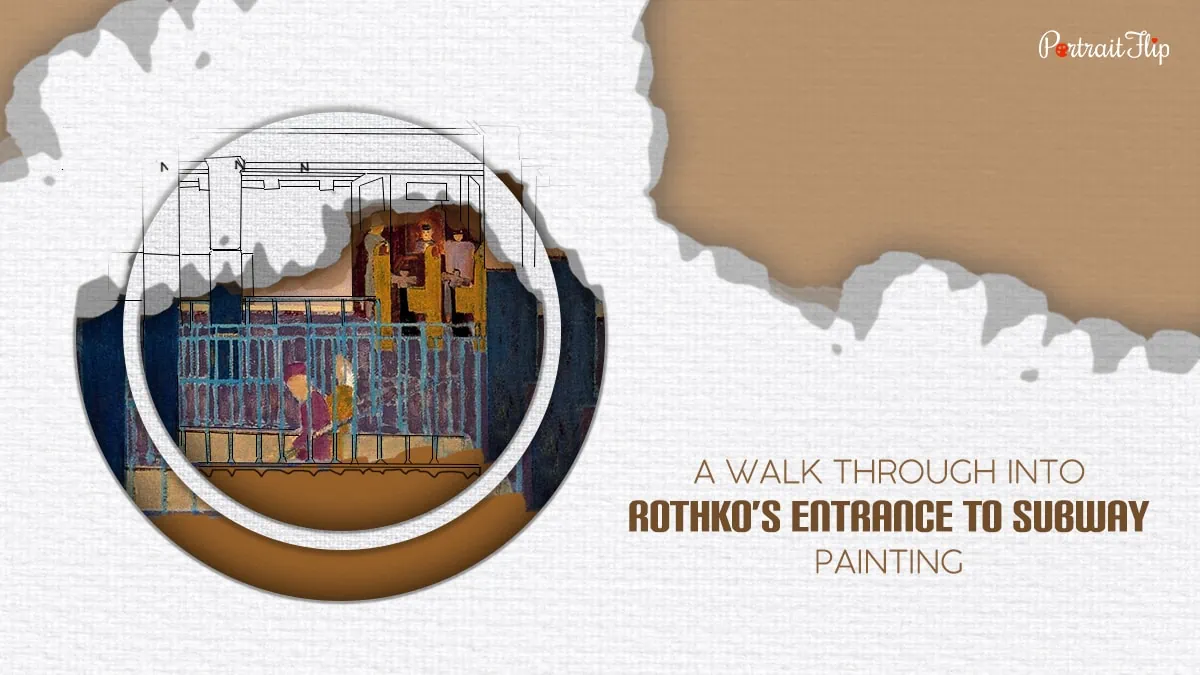When you walk down the subway, how do you feel?
You must be wondering what a weird question this is—how can someone feel anything while entering the subway? Apart from a sudden sense of consumption and claustrophobia.
Think as an artist, do you notice those people who are walking with you? Where are they heading? Do you randomly count the stairs the subway has, or do you observe the wall colors?
I know there will be some unusual thoughts crossing your mind about the course of this conversation.
Today I came across a painting that seemed simple but struck my mind with various questions about why an artist would create something like that.
What was his/her observation while going through the moment that he gave color to it?
This led me to do a thorough analysis of the most famous painting, “Entrance to Subway,” to get a clear picture of the artist’s mindset.
I thought, Why not share this abstraction of art with my readers?
Now you know why this blog was written in the first place. So let’s enter the subway like Mark Rothko did.
Table of contents
An Abstract Painter
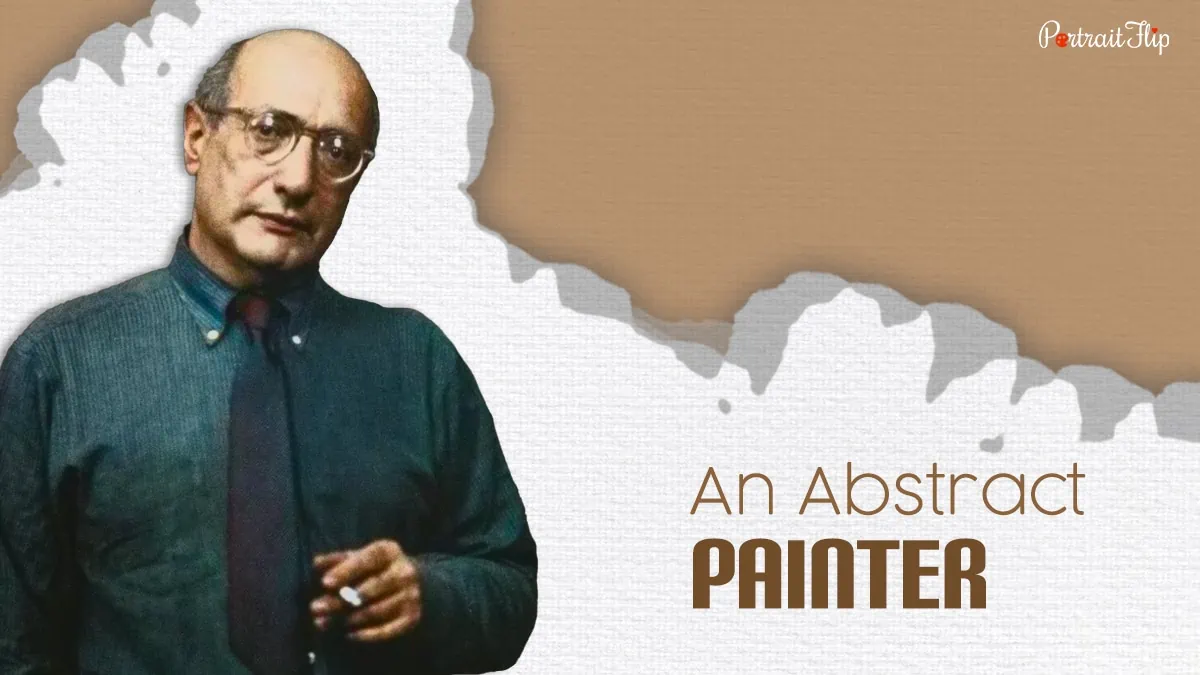
If we are talking about a painting, it will be sad if we don’t discuss the man who created the art in the first place.
So, who was Mark Rothko?
He was a Latvian-born American and a widely known figure among the famous abstract painters.
He was a man who knew four different languages and had a brilliant academic background.
Apart from abstract expressionism, Mark’s interest was also in surrealism, which he used to express tragedy in his works.
He had a full package of artistic skills, which makes us want to own one of his kind.
Although he was not known for his figurative paintings, Entrance to Subway made an exception in his life.
Unlike other famous artists, his main objective was to attract viewers with the thought that his paintings were fashionable and not just another artwork that moved them!
So, what do you think of his Entrance to Subway painting?
Fashionable? Or are you moved by the artwork?
The subway painting is neither fashionable nor affects the viewer in a certain way.
Then what exactly did this subway painter want to show?
Suggested Read: Magritte’s The Son of Man
An Art From Expressionism Period
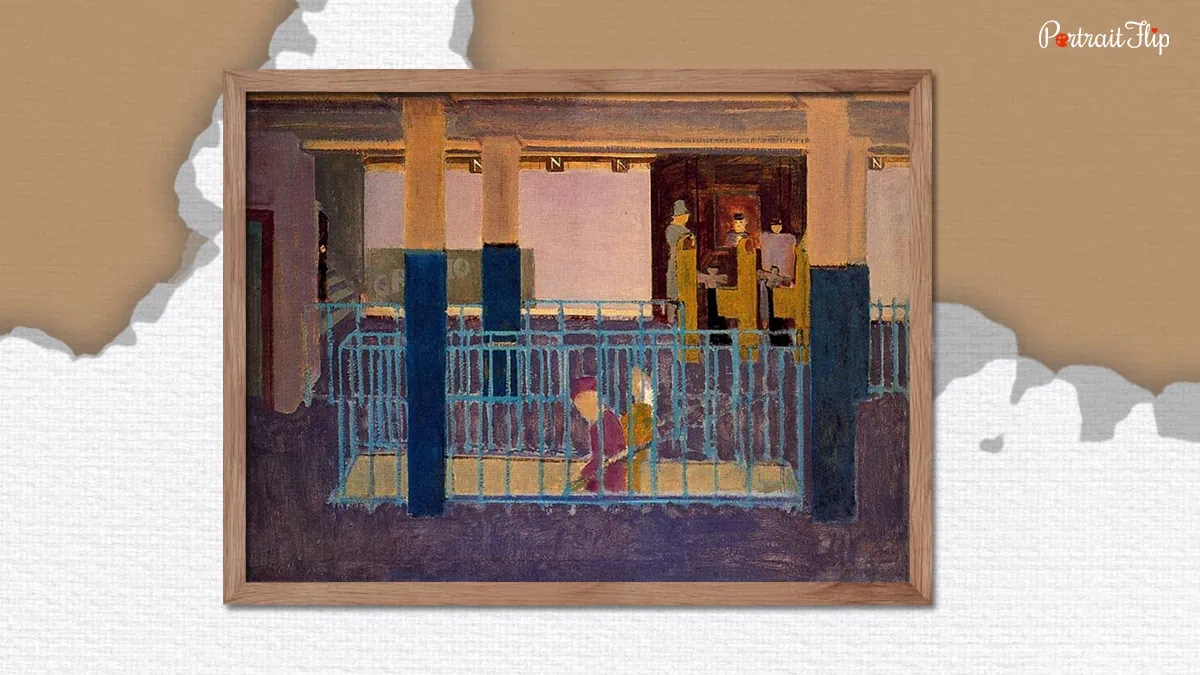
Being one of the famous abstract paintings, “Entrance to Subway” is an art piece that creates an unusual and striking view.
A 1938 creation where Rothko depicts an urban scene transformed in the simplest manner.
But what message does this Subway painting by Rothko convey?
It depicts the artist’s social surroundings when he was in his thirties, which were kind of dull and faded.
It also portrays the lost souls of New York who were involved within themselves.
An artwork that belongs to the expressionism period sets an example of Rothko’s thoughts and views about the people of New York.
He never fails to portray a deeper truth about human life in his artwork.
If we talk about why he painted Entrance to Subway, then the only answer that is obvious after looking at this work is to show the loneliness of city life.
Faces of people who are tired and pale with their daily routine, or should I say their monotonous life.
This artwork serves as an example of depression-era paintings, a time of poverty and unemployment in the city.
Well, to get a deeper understanding, the below section covers the analysis of Entrance to Subway Painting.
Also, if you love to read and learn about abstract art, then Jackson Pollock’s paintings is a treasure you have been waiting for.
Analysis of Entrance to Subway
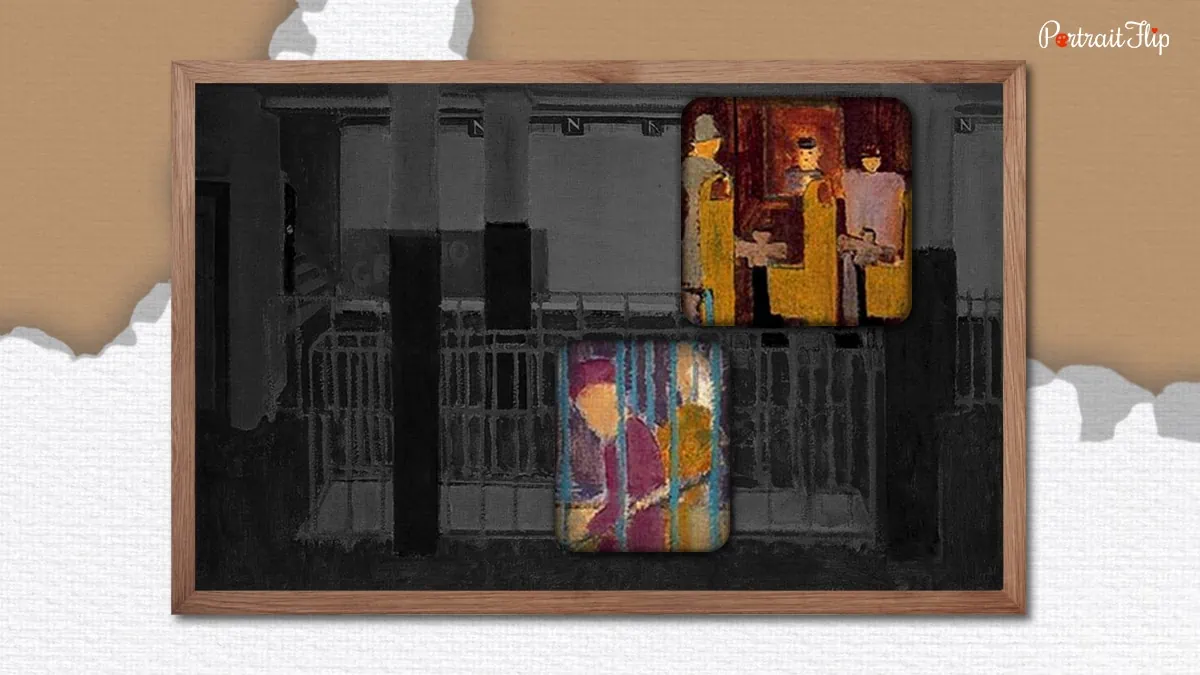
Welcome to the most awaited section of the blog that will explain the exact meaning behind this striking artwork.
As you know, paintings by Rothko were always about colors and experimenting with shades.
Well, just look at Rothko’s No. 61, a perfect example of his color inventions.
But this figurative artwork (Entrance To Subway) gives a different perspective on what he had in mind during his 30s.
If you look at the work, you will notice that the figures seem to be thin, pale, and faceless.
The commuters seem to be detached from what is happening around them, with zero communication among each other.
A man’s estrangement from a man-made world.
A common question that rushes through our minds is, why are people painted in such a manner?
As I mentioned earlier, they represent the loneliness in one’s life and a small summary of how the people in NYC lived.
One can almost feel the heaviness of silence that illuminates from the painting, The Entrance to Subway.
Another Analysis
There is one more analysis about the New York folks depicted in the artwork, and that is: They don’t care!
They don’t care about any other person moving beside them, as they are immersed in their own thoughts and daily routine.
Don’t you feel dark and haunted as you step into the painting?
Yes, me too! It is as if the souls of the people have been lost in their repetitive and never-ending cycle of life.
They are stuck in a monotonous schedule with a feeling of isolation and detachment from the outside world.
Well, Mark doesn’t stop after painting this masterpiece, as there are more subway paintings added to his list!
Isn’t this piece unleashing mystery after mystery? It surely does.
I wonder how this abstract painting will look on my wall. Do you have the same thoughts?
Then why wait? Click on the link below and give your decor an abstract appearance!
Subway Series: Are There More Subway Paintings by Rothko?
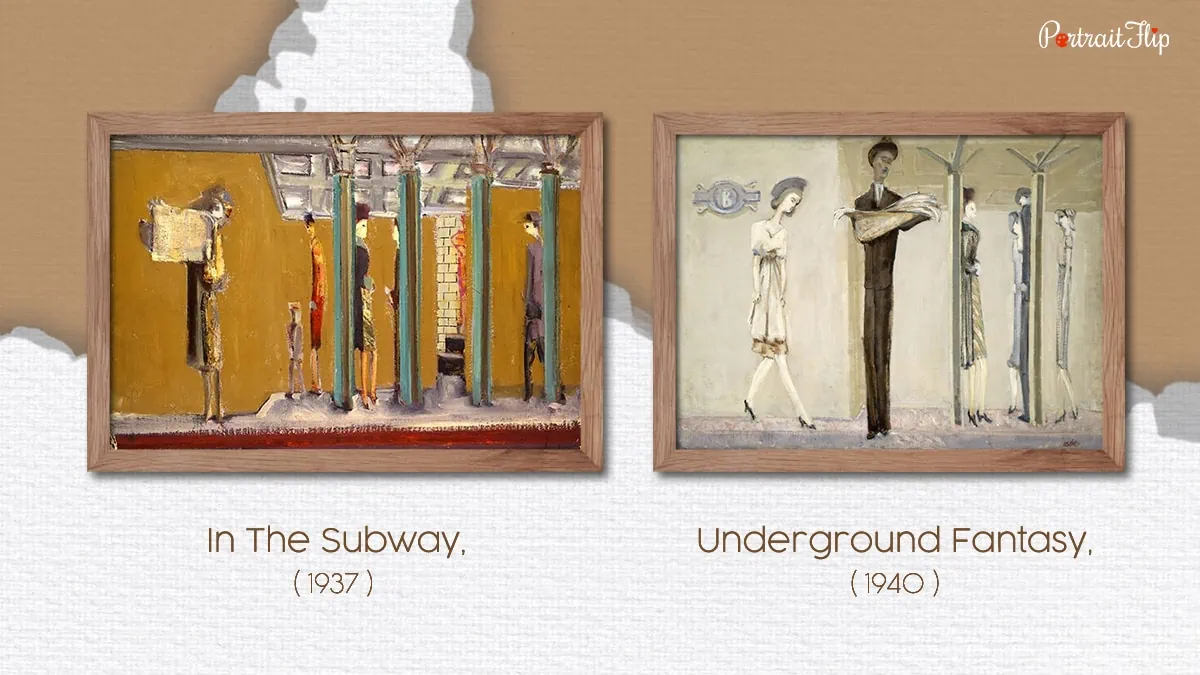
A subway series? I guess Rothko was not satisfied with his Entrance to Subway. Afterall, it was nothing, but just an entrance.
Or it could be possible that he couldn’t get enough New Yorkers in the painting. Was he obsessed? Maybe.
There could be n-number of possibilities. One being that he was curious to get more of the city people after painting the first series.
Apart from “Entrance to Subway”, Mark created “In the Subway (1937)” and “Underground Fantasy (1940),” which are counted among his subway series.
If you look at the image above, you’ll notice that, from a mask-like human walking around, he gradually gave faces to the people.
Mark Rothko was a genius; do you know why?
Answer this: Where can we examine humans with the most different facial expressions?
It has to be the subway, and Rothko’s work uncovers the reality that the people were facing in their daily lives.
The aim was to give a clear view of the urban scene and enlighten the style of the regular people walking down the subway.
If you are into Rothko’s art then you will surely find his White Center painting unique that triggers human emotions.
Rothko’s Style: A Not-So-Color Field Painting
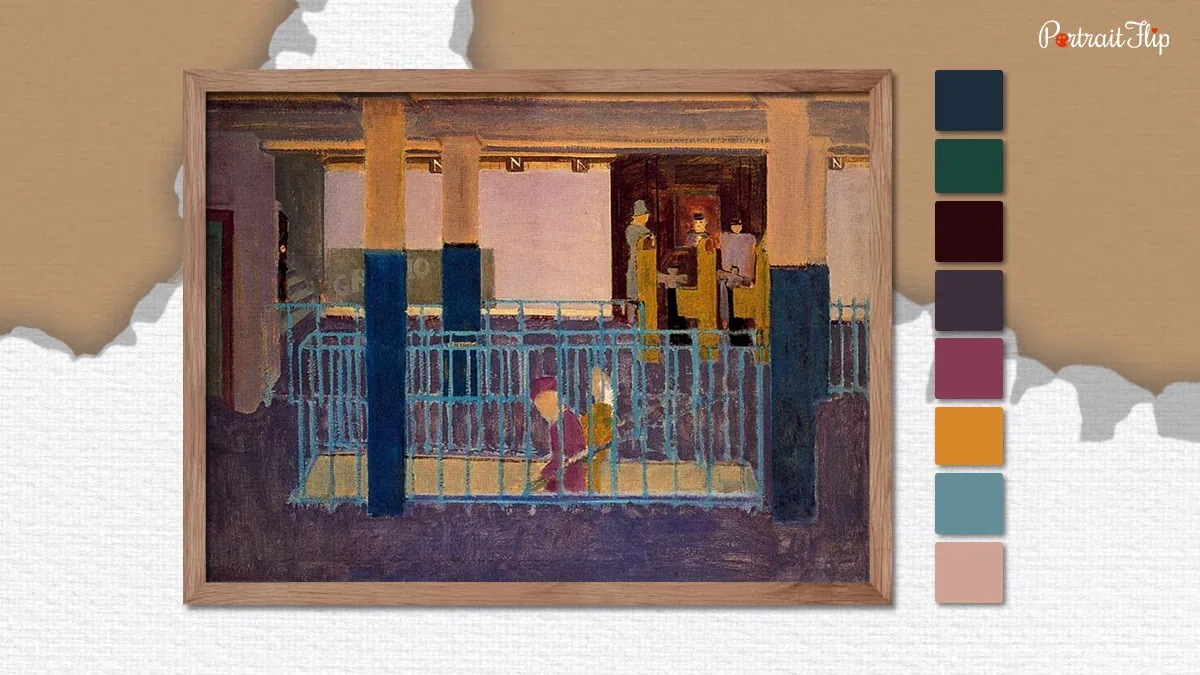
A painter that was known for his colorfield techniques drew an artwork that was not-so-colorfield, strange!
Maybe he was experimenting, or was he inspired?
Well, the answer is inspiration!
He was inspired by Milton Avery, who was known for his colorful painting style. If you search for Milton Avery’s artwork, you’ll get to know exactly what I am talking about.
Rothko always said, “Colors are performers,” which could be seen with every brushstroke in his artwork.
Although the color palette used by the artist is cheerful (blue, purple, and yellow), the meaning is exactly the opposite.
His opinions were very strong on the choice of colors for the painting.
Rothko’s technique and use of sophisticated colors became the focal point of Entrance to Subway.
If you want to learn more about colors, then why not learn from the best? Kandinsky’s Color Study: Squares with Concentric Circles is a brilliant example when it comes to experimenting with shades.
Personal Insight
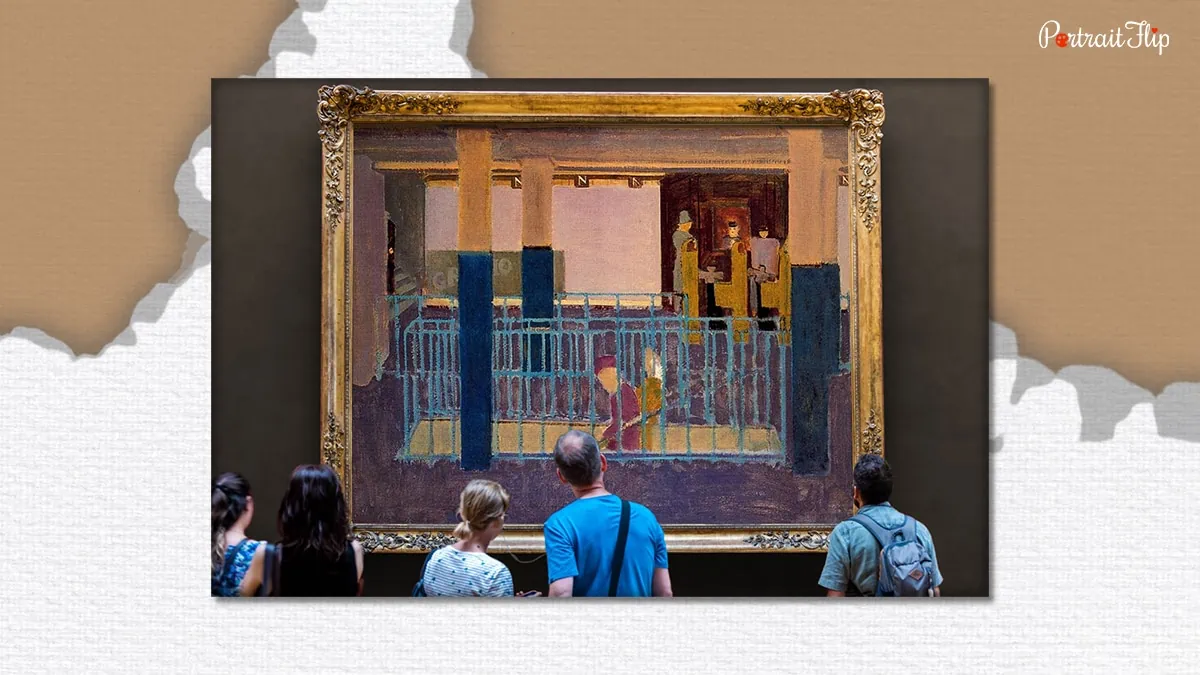
You know why this blog was written in the first place, because my eyes got stuck on this unusual painting, seeking answers to what the hell I was even looking at.
I have given you an analysis of Entrance to Subway, but there are some individual thoughts that first crossed my mind.
As a writer, I have conveyed the story that this painting contributes, but when I said earlier to think as an artist, I really meant it.
As soon as I entered the painting virtually, there was a sudden quietness on my mind.
It took me to a place where people don’t care about others and are just walking down the subway, indulged in their own thoughts.
Even the faceless figures brought some chills, leaving a perspective about the artist that maybe every person is similar in some way in his eyes.
But the meaning turns out to be different, as we learned from the above section.
There are always some personal insights when we first glance at a painting. You must have it too, right?
What did you feel when you first saw Entrance to Subway?
How about you share your personal thoughts at [email protected]? This will be our little secret!
Lastly,
Do you know how much Rothko’s paintings sell for?
Rothko’s artwork has a selling range of more than ten million dollars and can be found in different galleries and private collections all over the world.
Does this make you wonder how much Entrance to Subway costs?
Although the price is not disclosed, the worth of Mark’s previous work gives us a rough estimate that it must have cost more than a million dollars. It’s huge, I know!
The Writer Says Hi!
Done with the blog, “Entrance to Subway?”
How did you find the article overall? Informative, interesting, and full of facts?
Give your valuable feedback about the blog in the comments. Let’s hear your thoughts on this abstract painting.
But wait, this is not the end. I have a surprise for you.
Now that I know about you and your love for paintings, you can check out our Instagram page and subscribe to our YouTube channel, where you will find new updates on artworks regularly.
I hope to see you on the next blog!
FAQs
Rothko always painted in rectangle form in order to communicate what he believed was the real meaning of art, which is universal and supernatural, or we can say the spirit of myth.
There is no exact location disclosed that claims to hold Entrance to Subway Painting, which makes it more mysterious.
The subway painting measures 118 by 86 cm.
The people of the city, who were following a monotonous routine in their lives, made Rothko paint this subway description.

